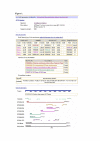PCAS--a precomputed proteome annotation database resource
- PMID: 14594458
- PMCID: PMC293463
- DOI: 10.1186/1471-2164-4-42
PCAS--a precomputed proteome annotation database resource
Abstract
Background: Many model proteomes or "complete" sets of proteins of given organisms are now publicly available. Much effort has been invested in computational annotation of those "draft" proteomes. Motif or domain based algorithms play a pivotal role in functional classification of proteins. Employing most available computational algorithms, mainly motif or domain recognition algorithms, we set up to develop an online proteome annotation system with integrated proteome annotation data to complement existing resources.
Results: We report here the development of PCAS (ProteinCentric Annotation System) as an online resource of pre-computed proteome annotation data. We applied most available motif or domain databases and their analysis methods, including hmmpfam search of HMMs in Pfam, SMART and TIGRFAM, RPS-PSIBLAST search of PSSMs in CDD, pfscan of PROSITE patterns and profiles, as well as PSI-BLAST search of SUPERFAMILY PSSMs. In addition, signal peptide and TM are predicted using SignalP and TMHMM respectively. We mapped SUPERFAMILY and COGs to InterPro, so the motif or domain databases are integrated through InterPro. PCAS displays table summaries of pre-computed data and a graphical presentation of motifs or domains relative to the protein. As of now, PCAS contains human IPI, mouse IPI, and rat IPI, A. thaliana, C. elegans, D. melanogaster, S. cerevisiae, and S. pombe proteome.PCAS is available at http://pak.cbi.pku.edu.cn/proteome/gca.php
Conclusion: PCAS gives better annotation coverage for model proteomes by employing a wider collection of available algorithms. Besides presenting the most confident annotation data, PCAS also allows customized query so users can inspect statistically less significant boundary information as well. Therefore, besides providing general annotation information, PCAS could be used as a discovery platform. We plan to update PCAS twice a year. We will upgrade PCAS when new proteome annotation algorithms identified.
Figures

Similar articles
-
Website review: interPro (the integrated resource of protein domains and functional sites).Yeast. 2000 Dec;17(4):327-34. doi: 10.1002/1097-0061(200012)17:4<327::AID-YEA45>3.0.CO;2-K. Yeast. 2000. PMID: 11119311 Free PMC article.
-
MyHits: a new interactive resource for protein annotation and domain identification.Nucleic Acids Res. 2004 Jul 1;32(Web Server issue):W332-5. doi: 10.1093/nar/gkh479. Nucleic Acids Res. 2004. PMID: 15215405 Free PMC article.
-
PCHM: A bioinformatic resource for high-throughput human mitochondrial proteome searching and comparison.Comput Biol Med. 2009 Aug;39(8):689-96. doi: 10.1016/j.compbiomed.2009.05.006. Epub 2009 Jun 21. Comput Biol Med. 2009. PMID: 19541297
-
Bioinformatics approaches for functional annotation of membrane proteins.Brief Bioinform. 2014 Mar;15(2):155-68. doi: 10.1093/bib/bbt015. Epub 2013 Mar 23. Brief Bioinform. 2014. PMID: 23524979 Review.
-
Protein family classification and functional annotation.Comput Biol Chem. 2003 Feb;27(1):37-47. doi: 10.1016/s1476-9271(02)00098-1. Comput Biol Chem. 2003. PMID: 12798038 Review.
Cited by
-
e-Fungi: a data resource for comparative analysis of fungal genomes.BMC Genomics. 2007 Nov 20;8:426. doi: 10.1186/1471-2164-8-426. BMC Genomics. 2007. PMID: 18028535 Free PMC article.
-
SPD--a web-based secreted protein database.Nucleic Acids Res. 2005 Jan 1;33(Database issue):D169-73. doi: 10.1093/nar/gki093. Nucleic Acids Res. 2005. PMID: 15608170 Free PMC article.
-
Automated quantitative assessment of proteins' biological function in protein knowledge bases.Adv Bioinformatics. 2008;2008:897019. doi: 10.1155/2008/897019. Epub 2008 Jun 30. Adv Bioinformatics. 2008. PMID: 19920991 Free PMC article.
References
Publication types
MeSH terms
Substances
LinkOut - more resources
Full Text Sources
Molecular Biology Databases
Research Materials

